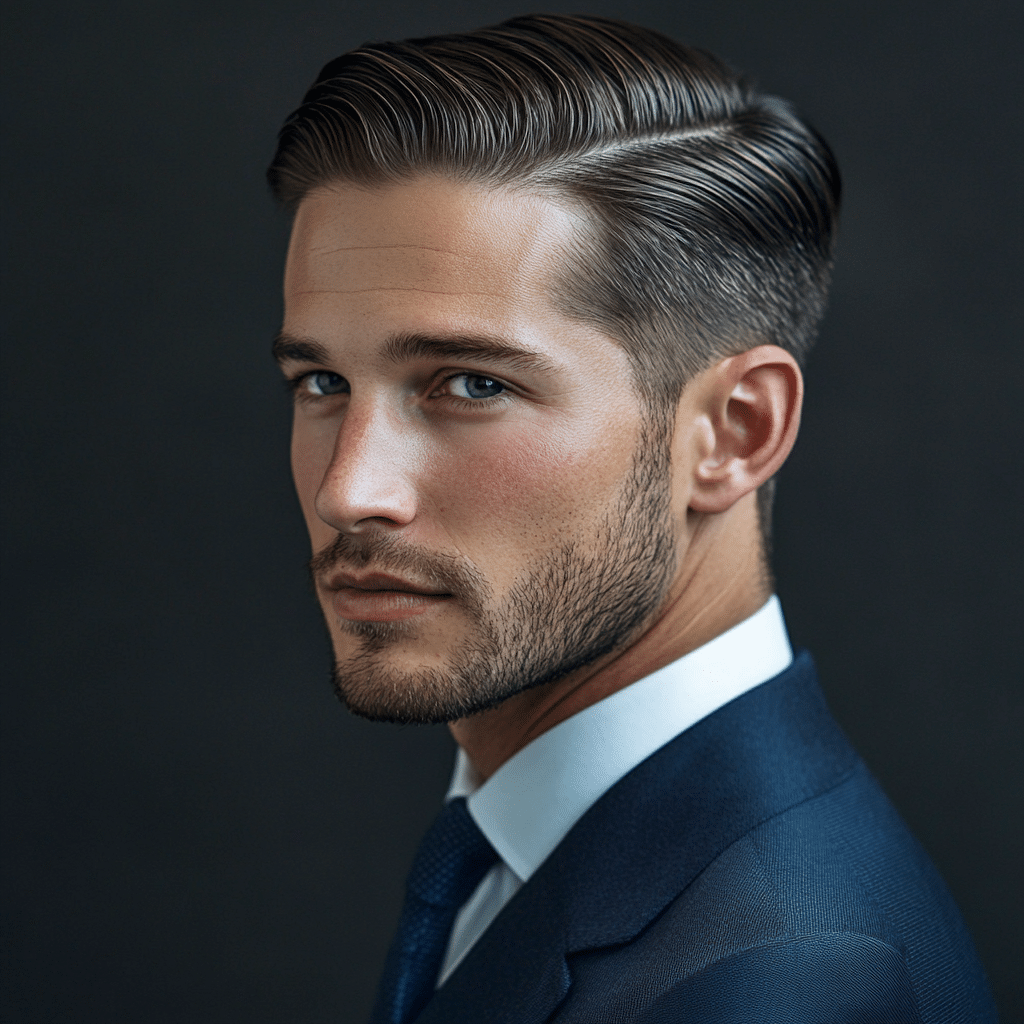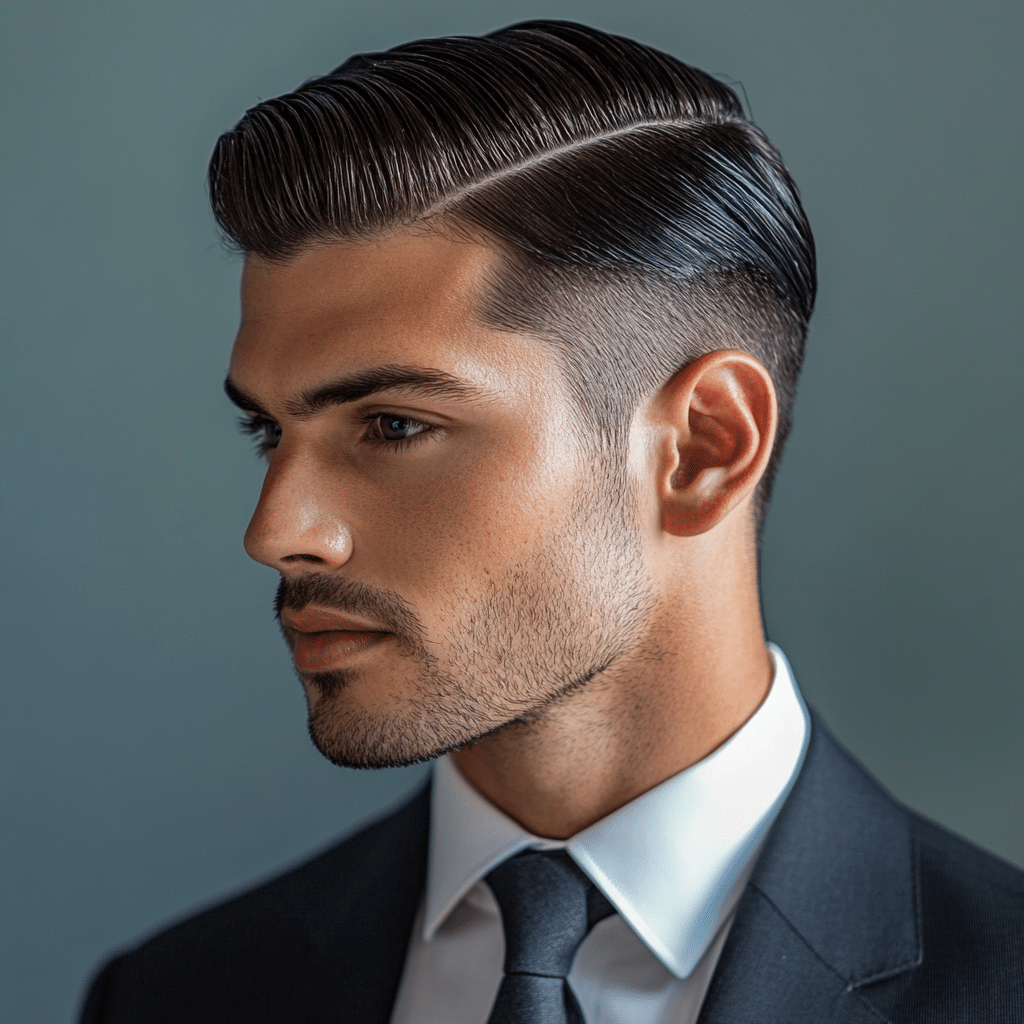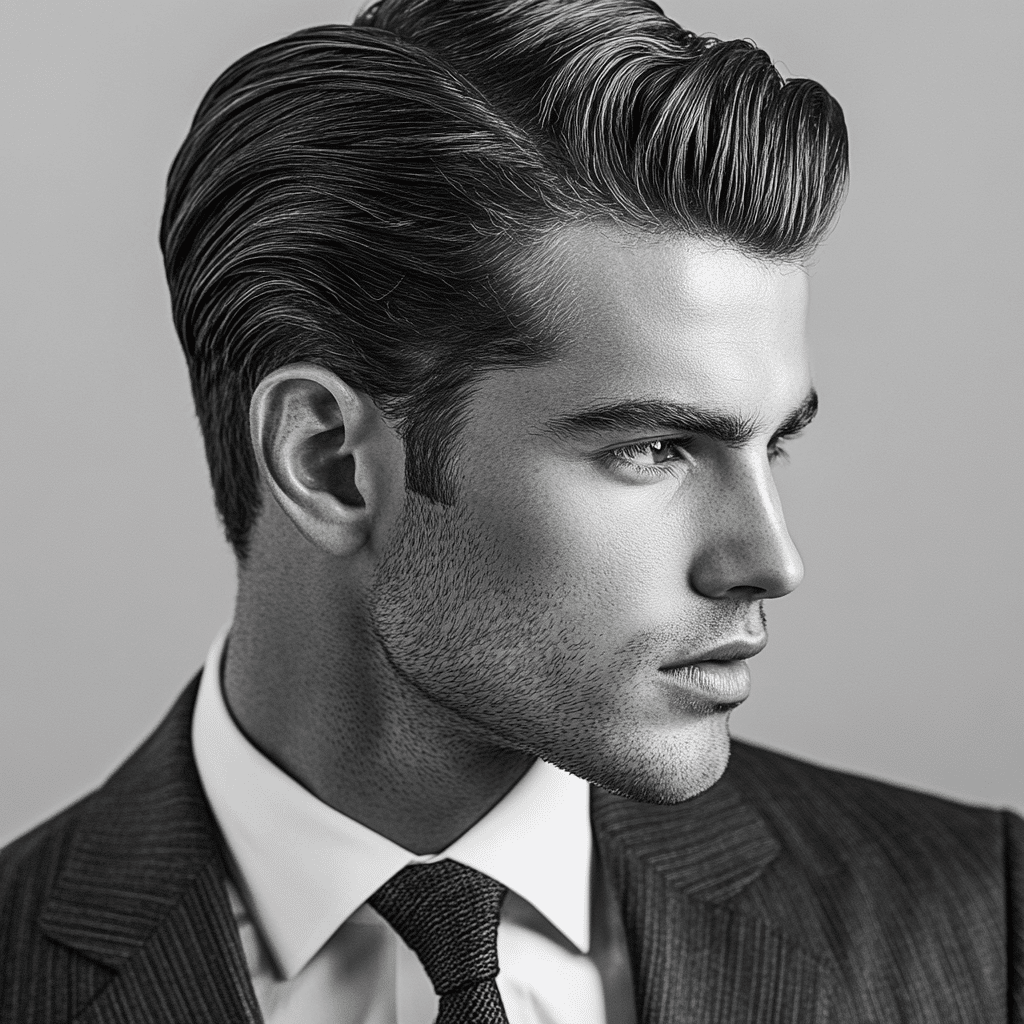Side Part vs. Comb Over: Key Differences & Styling Guide
Both the side part and the comb-over are classic men’s hairstyles—but their reputations have taken very different paths. Once associated with covering up bald spots, the comb-over has evolved into a sleeker, more deliberate style where you can actually see the defined lines created by the comb itself. It’s no longer just a fix—it’s a flex.
By contrast, the side part has long been a go-to for guys seeking timeless structure and a clean profile, though today’s versions often lean more relaxed, with natural volume and movement.

While these styles may seem similar at a glance, they differ in intent, finish, and styling technique. Whether you’re after sharp lines or soft flow, understanding the key distinctions between the side part and the modern comb-over will help you choose the look that fits your hair type, lifestyle, and vibe.
1. The Side Part
The side part is a versatile and polished hairstyle that adds volume and dimension without looking overdone. It’s less rigid than a comb-over and works well with natural texture—whether your hair is straight, wavy, or somewhere in between.

Why it works:
The part line is subtle but directional, giving the face definition without screaming for attention. You can slick it back for formal occasions or wear it with a bit of lift and mess for everyday cool.
Styling tip:
Use a lightweight styling cream or matte pomade, and comb through while damp to find your natural part. Then either blow-dry for volume or let it air-dry for a softer finish.
Key Features:
✔ More natural volume and texture, rather than a sleek, combed-down finish.
✔ The parting can be soft or well-defined, depending on styling preference.
✔ Works well with medium-length hair, allowing for added lift.
✔ Best styled with matte clay, light pomade, or texturizing spray for a fuller look.
✔ Can be paired with fades or tapered sides for a clean yet voluminous effect.
Best For:
✅ Men who prefer a stylish, adaptable hairstyle that works in both professional and casual settings.
✅ Those with wavy or slightly thicker hair who want a fuller appearance.
✅ Individuals looking for a less rigid, more relaxed business style.

Style Tip:
For a modern side part, use a blow dryer and a round brush to add lift, then finish with a lightweight matte product for texture and natural movement.
2. The Comb Over
The comb over is a precise, structured hairstyle that features a well-defined part and neatly combed hair, often styled with pomade for a sleek and professional appearance. While it was once associated with covering up thinning hair, the modern comb-over has evolved into a confident, intentional look. Today, it’s less about concealment and more about control—with the visible lines of the comb becoming part of the style itself. Unlike the more voluminous and free-flowing side part, the comb-over is designed to look deliberately styled, making it a go-to for formal and business settings where sharpness and polish are key.
There’s often some debate over where the comb over ends and the side part begins. But you could argue that all of these styles fall under the side part umbrella—it’s just a matter of how they’re styled. The comb over is the most classic, polished interpretation, while today’s looser side parts (sometimes styled with just fingers or natural texture) represent the messier, more modern evolution. The difference lies in finish: the comb over embraces structure and control; the modern side part leans casual, voluminous, and often intentionally imperfect.

Key Features:
✔ Defined part that clearly separates the top from the sides.
✔ Neatly combed and sleek, often styled with pomade or gel.
✔ Works best with short to medium-length hair for a structured look.
✔ Typically paired with low, mid, or high fades for a sharper contrast.
✔ Ideal for men who prefer a classic and professional cut.
Best For:
✅ Men who want a sleek, refined, and highly structured business look.
✅ Straight or fine hair types that hold a defined style well.
✅ Professionals who prefer low-maintenance, clean-cut grooming.

Style Tip:
For a sharp, executive-style comb-over, apply pomade to damp hair and use a fine-tooth comb to create a clean, defined part with a sleek finish.
Key Differences Side Part vs. Comb Over at a Glance
| Feature | Side Part | Comb Over |
|---|---|---|
| Parting | Soft or natural part, sometimes subtle | Defined, sharp part |
| Structure | Voluminous, textured, and more relaxed | Sleek, precise, and structured |
| Volume | More natural height and movement | Controlled, smooth look |
| Styling | Uses matte products for texture | Uses pomade or gel for shine |
| Formality | More adaptable for casual-professional settings | Ideal for highly formal and business environments |
| Best for | Semi-short haircuts to Medium-length, wavy, or thick hair | Short to medium-length, straight or fine hair |
| Typical Length | Medium to longer styles for added texture | Short to medium for a neat finish |

Final Thoughts: Side Part vs. Comb Over. Which One Should You Choose?
- Side Part is more of a placement than a technique. It refers to where you part your hair—usually off-center—and doesn’t necessarily require a comb. It can be worn loose, brushed with fingers, styled with volume, or even paired with fades or tapers. It’s a broader, more versatile category.
- Comb-Over, on the other hand, refers specifically to the action of combing the hair over from one side to the other—often using a visible, clean combed pattern. It tends to be sleeker, more directional, and purposefully styled. By definition, it involves a comb. Think of it as more “crafted.”
✔ If you want a modern, voluminous look with a touch of texture, go for the side part.
✔ If you prefer a sharp, structured, and ultra-professional style, opt for the comb-over.
✔ Both styles can be enhanced with a fade, taper, or undercut for a more contemporary feel.
Whether you favor the textured movement of the side part or the polished control of the comb-over, both hairstyles offer timeless appeal and workplace-ready sophistication.





